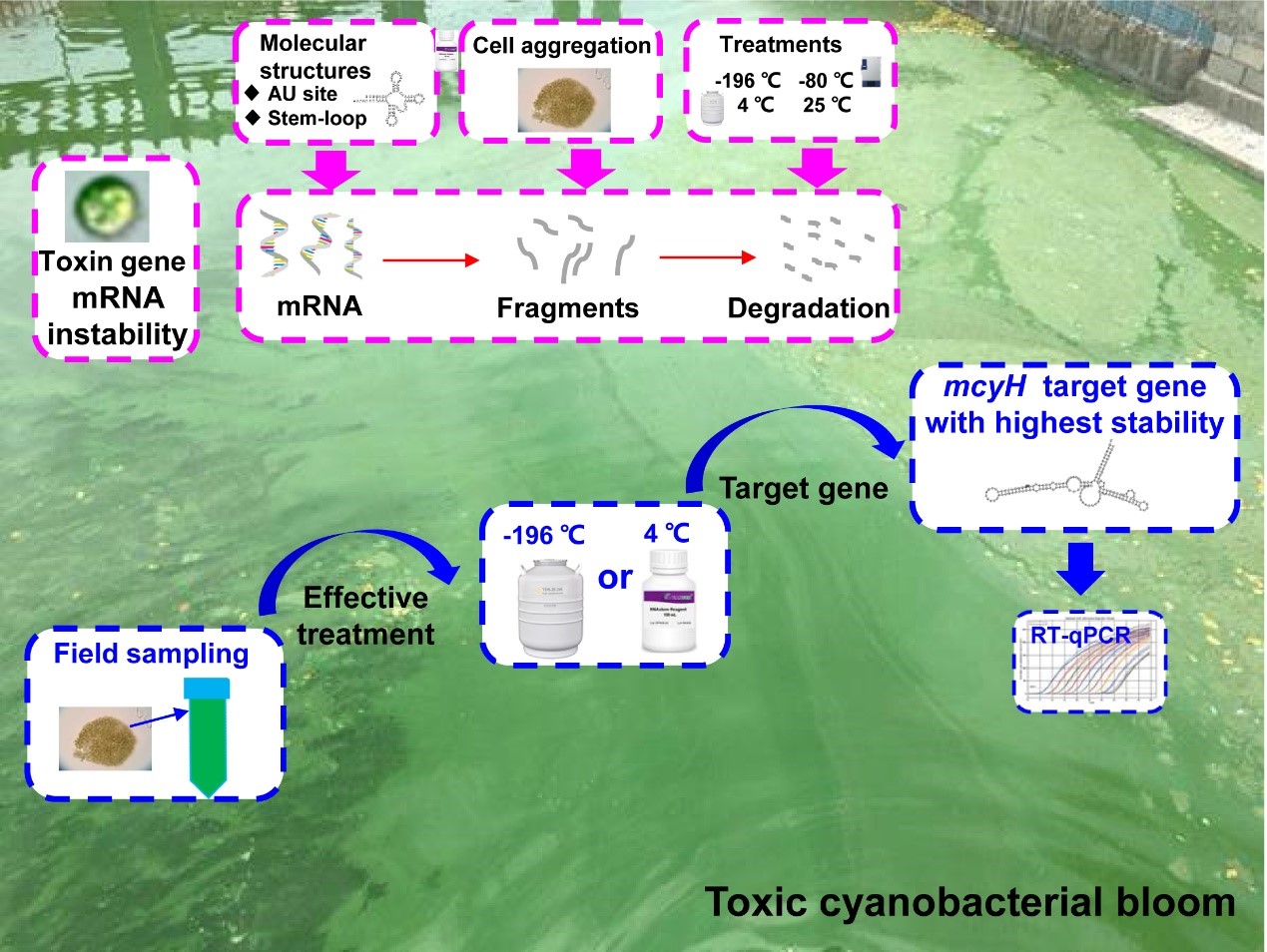Harmful cyanobacterial blooms in eutrophic lakes and reservoirs have been reported all over the world. Many species of cyanobacteria and its cyanotoxins (e.g. microcystin) have posed serious threats to human health and aquatic ecosystems. Thus, reliable, sensitive and rapid approaches to establish early warning systems to reduce risk of toxic cyanobacterial blooms.
Microcystins (MCs) are the most frequently occurred cyanotoxins, produced by a number of cyanobacteria (e.g. Microcystis spp., Nostoc spp., Phormidium spp., Anabaena spp., Oscillatoria spp. and Planktothrix spp.). Microcystin is synthesized by a large multifunctional enzyme complex, encoding by a toxin gene cluster (mcyA-J). RNA-based molecular technique (RT-qPCR), which allows the detection of potential toxin-producing cyanobacteria that are alive and actively transcribing the toxin genes, is a reliable method with high sensitivity for monitoring toxic cyanobacterial bloom. However, selecting proper target genes and effective sample preservation treatments are essential prerequisites to establish a reliable early warning method.
This study revealed the highly instability of toxin gene transcripts, affected by cell aggregation and molecular structures (AU sites and stem-loops). Among toxin genes, mcyH with the highest stability of its transcripts, was the most proper target gene for monitoring toxic cyanobacterial bloom. The -196 ℃ was the most effective treatment to stabilize these transcripts of toxin genes, and RNAstore (4 °C) could effectively stabilize these transcripts of toxin genes for a short time (1-7 d). Nonetheless, cell aggregation reduced these transcripts stability especially RNAstore
(4 °C) could effectively stabilize these transcripts of toxin genes for a short time (1-7 d). Nonetheless, cell aggregation reduced these transcripts stability especially RNAstore treatment. Our study has offered suggestions to address this issue, and will provide important references for colleagues in various countries.
treatment. Our study has offered suggestions to address this issue, and will provide important references for colleagues in various countries.
The above mentioned results has been published at HARMFUL ALGAE (Evaluation of RNA degradation in pure culture and field Microcystis samples preserved with various treatments) and Journal of Microbiological Methods (Importance of messenger RNA stability of toxin synthetase genes for monitoring toxic cyanobacterial bloom). PhD student Xi Li is the first author and Professor Xin Yu is the corresponding author. This study was supported by the Science and Technology Project of Water Resources Department of Fujian Province (MSK201711) and Science and Technology Major Project of Xiamen (3502Z20171003).
